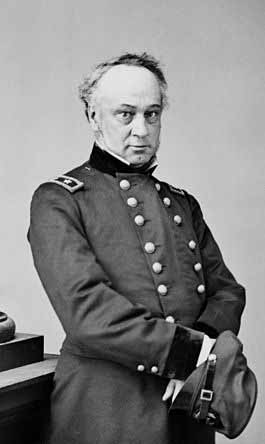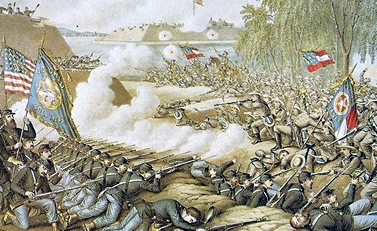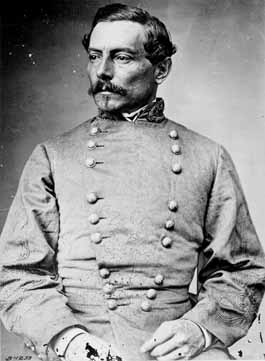
(General Henry Wager Halleck, Union Commander in the West, 1862).
It is only about 24 miles from Pittsburg Landing to Corinth, MS, but it can seem a lot further. Maybe it is the state line. Maybe it is the guy in charge.
The front end of the War in the West features General Ulysses Grant as the victor at Fort Donelson and- barely- at the bloodbath of Shiloh. It is a little disconcerting to see him slip back in the hierarchy as the Union Armies of the Ohio and Tennessee Mississippi massed.
Grant, of course, had the Army of the Tennessee. But the magnitude of the force- some 120,000 strong- required an overall commander senior to Grant. That man was Henry Wager Halleck, a long-serving officer noted as a scholar and lawyer, two qualities that Grant would eschew. His Service Buddies called him “Old Brains,” due to his expertise in the doctrine of the military arts.
He was a cautious man, a shrewd property developer and a master of logistics. He believed in careful preparation, not bold acts.
He was above all things an able administrator, adept at administrivia. Later, as what we would call Army Chief of Staff in Washington, he was unable to exert effective influence on his field commander in the East, “Little Mac” McClellan. President Lincoln was exasperated by the lack of aggressiveness, and he disparaged Halleck as “little more than a first class clerk.”
At the end of the war he wound up as Chief of Staff to Grant, a man who had his flaws but knew what war was about when Lincoln selected him as General-in-Chief to scourge the Rebels. But that was later, and after a parade of Union Generals who were too timid or unlucky, and baffled by the risk-taking tactics of Robert E. Lee and his bold Lieutenants.
But my Great Great Grandfather and the 72nd OVI are subordinated to General William Tecumseh Sherman in the Army of the Tennessee , and probably not that concerned with General Halleck.
The results of the battle at Shiloh had everyone talking. With more than 20,000 casualties on the field, the whole notion of what the war was about was changing. The crowds that had taken picnic baskets to the field at First Manassas (Bull Run, if you prefer) were suddenly chilled at the magnitude of the violence that had been unleashed.
Halleck was extra cautious. He believed strongly in thorough preparations for battle- I see him from this distance as something like British Field Marshall Montgomery, for whom everything had to be “just so” to move forward. In the aftermath of the carnage at Shiloh, he was determined to follow Joe Johnson’s Confederate Army to the railroad junction at Corinth. Still, his caution leaned toward the value of defensive fortifications over quick, aggressive action.
Although Corinth would have been a single day’s march for Stonewall Jackson’s Rebel “foot cavalry,” Halleck presided over a tedious campaign of entrenching at each advance. By the end of May, he had succeeded in moving only five miles toward Mississippi. The weather was bad, and Halleck entrenched every night.
Eventually , there were seven progressive lines and forty miles of trenches along the way south from Shiloh.
I don’t know what Grandfather might have thought- the realization of the magnitude of the disasters that could happen obviously was as well known to rank and file Union soldiers.
On the other side, Confederate morale was low and General P.G. T. Beauregard’s force was outnumbered two to one. The water was polluted. Typhoid and dysentery rendered thousands of his troops non-combat ready or killed them outright. As the rest of the war would demonstrate, the hygiene of men in the ranks was appalling and deadly. Sickness had claimed as many men as had the fighting at Pittsburg Landing. At a high-level staff meeting, the Confederate officers concluded that they could not hold the rail junction at Corinth, and the best plan was to disengage from Halleck’s forces and withdraw toward Tupelo.
There was an action at Farmington, in which the always aggressive John Pope’s union troops made it almost to Corinth, but were ordered back to consolidate with General Don Carlos Buell’s Center Wing.
The fight at Russell’s House was the one featuring Sherman’s division, and the 72nd OVI. General James R. Chalmers had formed a strong defensive position, and Sherman proposed to hurl two brigades against them, supported by a third. On May 17 the attack commenced as the Confederates responded with a flank attack that nearly succeeded before Union field artillery from the 1st Illinois saved the day.
Widow Surratt’s Farm was contested on the 21st of May in a see-saw battle before the Confederates retired. On the 27th, the Double Log House (a stout cabin converted to a block-house with firing positions created by knocking the chinking out) was the objective for Sherman’s Division, and would have been supported by the 72nd OVI.
Sherman formed an attacking column with two brigades and two more in support. The Confederates rallied and drove Sherman’s skirmishers back, but the counterattack stalled against the main body of the Union infantry. The following day the rest of Sherman’s division (including Grandpa’s unit) moved forward to the new position that offered a good position to gaze into Corinth itself.

(By May 25, the Union Army was entrenched on high ground within a few thousand yards of the Confederate fortifications. From there, Union guns shelled defensive earthworks, supply bases and the railroad facilities in Corinth).
By the end of the month, the Federals had engaged the rebels at Surratt’s Hill and Bridge Creek and were preparing to lay siege to Corinth. At a council of war, the consensus of Rebel thought was that being trapped in a bag was not the optimal course of action. General Beauregard came up with a ruse to cover the strategic withdrawal, using clever tradecraft to feed the Federals with bad intelligence. He ordered three day’s rations be provided to some of his men, who were in turn ordered to prepare for an attack against the Union forces.

(General P.G.T. Beauregard).
Beauregard was counting on the fact that some of those men would prefer not to participate in a foolhardy assault against superior forces. He was right. One or two men defected to the Union side with the information that the Rebels were coming for them. Artillery began to boom as the two armies juggled for position. Instead, the Confederates conducted a strategic deception. On the night of the 27th, artillery and tons of supplies along with the wounded and sick men were loaded on cars of the Mobile & Ohio Railroad and evacuated.
When a train arrived, the troops were directed to cheer as though they were receiving reinforcements and rations. Dummy guns- tree trunks painted black, and known as “Quaker Guns”- were set up on the defensive earthworks and campfires were lit in numbers that suggested a growing force, as buglers sounded regimental calls and drummers beat the cadence.
The main body of the Confederate force slipped away undetected, melting into the night, heading for Tupelo, MS.
When the first Union patrols entered Corinth on the morning of May 30, they found the Confederate troops gone with the morning dew. The Union force dug in for an extended fifteen-month stay.
The 72nd OVI did not stick around to garrison Corinth. They were directed to march to Memphis, TN, via La-Grange (53 miles), Grand Junction (7 miles), and Holly Springs (280 miles), starting the trek on the first of June, and arriving at Memphis (316 miles) on July 21st. That is 656 miles on foot, or an average of nearly 13 miles a day, rain or shine.
Then, the boys were directed to “other duties as assigned” in the Bluff City until November, 1862. At least they got a chance to take their boots off.
Copyright 2015 Vic Socotra
www.vicsocotra.com
Twitter: @jayare303
